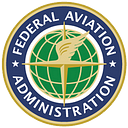You can make sound aeronautical decisions concerning bird strike mitigation, when the tower constantly broadcasts "use caution, birds in vicinity," by:
1. Being aware of the hazard, prioritizing safety, and enhancing see and avoid (using proper scanning technique — 10 degree segmented scan).
2. Possibly delay takeoff until birds have been dispersed.
3. Another alternative is to depart via another runway that is free of hazard, if available.
4. If the PIC makes the go decision. Be on the defensive.
Be on the ready to use your personal bird strike mitigation strategies.
If you notice significant bird activity on the field as you are taxiing, consider asking airport personnel to disperse them. Some airports have remotely triggered cannons that are controlled by tower personnel and used specifically to scare off birds.
Upon takeoff, pilots should use climb speed and flap settings that provide the best angle of climb (Vx).
Because birds usually exhibit evasive behavior in response to an approaching aircraft, pilots should use the aircraft’s external lights when flying in the bird-rich zone.
In case of a bird encounter, pilots should pull up (and if necessary temporarily change heading), consistent with good flying techniques to avoid a LOC, to pass over birds. Many species of birds typically dive to avoid colliding with an aircraft, but such behavior is not consistent. The behavior of birds towards an aircraft in flight is unpredictable and varies by species.
Note that prior to flight, the pilot should come prepared. This includes pilot knowledge and conducting proper preflight planning. Reach out to your FAASTeam Representative to see if they have any specific local insight or further advice.
Pilots should also develop personal knowledge of bird strikes through enhanced safety training for GA pilots. For example:
1. About 90% of bird strikes take place at or near airports.
2. About 61% of bird strikes with civil aircraft occur during landing phases of flight (descent, approach and landing roll); 36% occur during take-off run and climb; and the remainder (3%) occur during the en-route phase.
3. Birds are more active during dawn and dusk.
4. Understanding migration trends is also important knowledge for a GA pilot.
5. Prepare a personal bird strike mitigation strategy.
FAA Resources:
www.faa.gov/airports/airport_safety/wildlife/resourceswww.faa.gov/airports/airport_safety/wildlife/faq
Related publications:
AOPA, Bird and Wildlife strikes:
www.aopa.org/training-and-safety/active-pilots/safety-and-technique/bird-and-wildlife-strikes#2
AOPA Air Safety Institute's Safety Brief on Bird Strikes:
